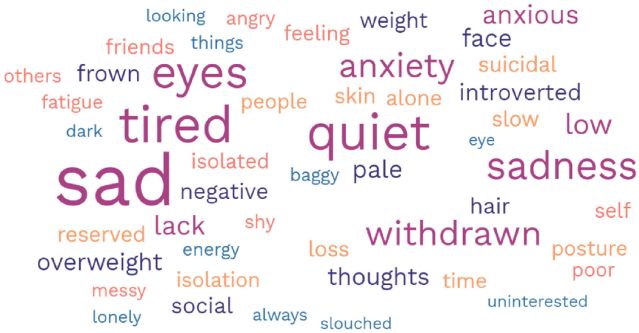Bias
What Depression Actually Looks Like
People who appear “high functioning” may not get the help they need.
Posted December 28, 2023 Reviewed by Monica Vilhauer
Depression is a significant source of suffering and disability, with many millions of individuals suffering its effects at any given time. A variety of structural factors might prevent someone with depression from obtaining treatment, including whether treatments are affordable and accessible.
But individual biases among both lay people and clinicians can also prevent treatment from reaching those who most need it. If your loved ones don’t recognize depression when you have it, or your healthcare providers fail to diagnose depression when they should, you are less likely to get the help you need.
In a series of newly published studies, researchers demonstrate just how powerful our stereotypes about depressed people are, and how these stereotypes make us less able to recognize depression, even when the symptoms of depression are clearly present.
In this new research, scientists examined what are called “prototypes.” Prototypes and stereotypes are overlapping ideas, but whereas stereotypes refer to generalized beliefs about members of a social category, prototypes are best described as our idea of what a typical member of a category is like.
Think of a prototype as the example that comes to mind when we consider a category. For example, imagine a person with an eating disorder. Despite the fact that eating disorders affect people of all ages, genders, races, and body sizes, most people imagine a thin, young, White woman when they think about the category “person with an eating disorder.”
Across 14 studies with over five thousand total participants, recent research published in the journal Psychological Science examined what people’s prototypes of depression are and how these prototypes affect judgments about who needs treatment. In the first two studies, researchers simply asked participants in both France and the U.K. to list characteristics of people with depression.
Overall, people expected those with depression to be sad, withdrawn from others, and show signs of fatigue. The image below is a word cloud created by the authors to show commonly used descriptors of those with depression.

Next, the researchers conducted several studies in which participants were randomly assigned to read a brief description of a person. In addition to some basic biographical information, the person was either described as having depression (“This person is clinically depressed. They often have insomnia and are in a state of a really bad mood.”), not having depression (“This person is not depressed. They have their ups and downs like everyone but are overall quite OK psychologically speaking.”), or no depression-related information was provided. After reading the description, participants rated the person on several dimensions.
Results showed that compared to the control condition and the condition that specified the person was not depressed, participants thought depressed people were more likely to be overweight and introverted, and less likely to be attractive, successful, and to take care of themselves. Across an additional seven studies with participants from France, the U.S., and the U.K., the researchers demonstrated that this pattern tended to emerge regardless of the type of job included in the description (e.g., welder, bank clerk, nurse) or what age or gender the hypothetical person was said to be.

In additional studies, the researchers assigned participants to read either a prototypical or counterprototypical description of someone with depression. In the prototypical condition, participants read about a hypothetical person (“S.K.”) who, “is not successful in her job, does not take care of her looks, is quite overweight, is physically unattractive, and is quite introverted.” In the counterprototypical condition, S.K. was described as taking care of her looks, successful in her job, in good physical shape, attractive, and extroverted. All participants (including those in a control condition) were also told that for the past four weeks, S.K. “has felt quite sadder than normal and could not get to sleep as well as they would have in the past.”
Participants who read the prototypical description believed that S.K. was in more psychological pain and was more likely to have depression. They also believed mental health care was more warranted for S.K. in the prototypical condition. Further studies showed that these results held regardless of S.K.’s gender.
Finally, researchers tried to reduce the effects of prototypes on participants’ judgments of individuals with depression by giving them this warning:
Note: Research has shown that most people consider the same symptoms (e.g., sadness and lack of sleep) as more indicative of depression if the people who have such symptoms fit the prototype of a person with depression (for instance, they are not successful in their job; do not take care of their looks; are physically unattractive, introverted, and overweight), compared with people who do not fit the prototype of a person with depression (for instance, they are successful in their job; take care of their looks; are physically attractive, extroverted, and in good physical shape). Take this into account when replying to the following questions.
Did the warning about the potential for bias help? Unfortunately, not completely. Even when warned to avoid the influence of prototypes, individuals were still more likely to recognize depression when it fit with the depression prototype, though the warning did lessen the bias a bit.
In theory, a diagnosis of depression is made on the basis of lists of symptoms and other criteria in medical manuals like the Diagnostic and Statistical Manual of Mental Disorders (DSM) or the International Classification of Diseases (ICD). But these results suggest that even when two individuals report the same symptoms of depression, we may be more likely to take those symptoms seriously when the individual is consistent with our idea of what a typical depressed person looks like.
In other words, people who appear more “high functioning” or whose symptoms are less outwardly visible may be less likely to get the help they need. Overall, this research is another reminder of how powerful our biases can be when it comes to understanding who is in pain and who may need help.
Facebook/LinkedIn image: Krakenimages.com/Shutterstock




